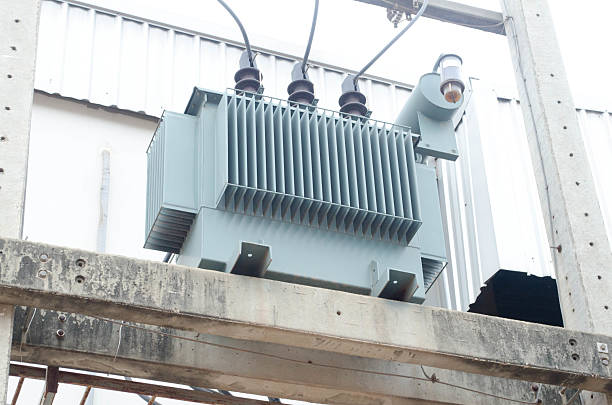Charger Transformer: A Clear Guide to Powering Your Devices Effectively
Numerous gadgets in our technologically advanced society depend on a constant supply of power to operate. However, your wall socket may not always supply the precise voltage or current that your devices require. Charger transformer provides that role by functioning as quiet defenders in the background to make sure your gadgets get the right amount of electricity. Because they make it easier and safer to move electrical energy from the power source to our electronic gadgets, charger transformers are essential to our everyday existence. These transformers act as crucial middlemen, transforming wall outlets’ high-voltage alternating current (AC) into lower-voltage direct current (DC). Their significance stems from their capacity to control current and voltage, shielding electronics from power fluctuations and surges that may otherwise harm delicate parts. These transformers provide quick and dependable charging while guaranteeing compatibility with a variety of devices, improving customer convenience. In addition, they enhance energy efficiency by minimizing power losses in the conversion process, which in turn lowers the amount of electricity used and the environmental effect.
This article delves into examining their uses, parts, and essential characteristics. We’ll also talk about certain varieties, such as the widely used Dodge Charger transformers and depth charge transformers.
Comprehending Charger Transformers: Operation and uses
A charger transformer is fundamentally an electrical device used to alter the properties of an incoming power source. Their main duty is to:
Step-up or step-down voltage: In North America and Europe, wall outlets normally supply 110V or 220V of AC (alternating current) voltage. However, for many electrical equipment to function securely and effectively, the DC (direct current) voltage has to be lower. This is accomplished by charger transformers by either stepping up or stepping down the voltage level.
Convert AC to DC: DC power is used by most gadgets. A rectifier part, which changes the incoming AC from the wall outlet into the DC appropriate for the device, is frequently included in charger transformers.
Charger Transformer Applications: Going Beyond the Basics
Charger transformers are used in several different contexts:
Chargers for mobile phones and laptops: These ubiquitous adapters convert the power from wall outlets to the precise DC voltage that your phone, laptop, or tablet needs.
Battery chargers: Charger transformers supply the voltage and current required to recharge rechargeable batteries, which are used in power tools, cameras, and other devices.
Applications in industry: Specialized equipment that runs at higher voltages is frequently needed in industrial settings. To power this equipment, charger transformers can step up the voltage.
Depth charge transformers: In maritime settings, these transformers are used to convert high surface voltage to a lower voltage appropriate for underwater uses, such as submerging vehicles or running specialized machinery.
Internal Operation: Charger Transformer Components
Charger transformers are essential components that support vital processes and propel technical progress in a variety of sectors. These transformers provide smooth power management for manufacturing processes, renewable energy systems, and telecommunications infrastructure. They guarantee uninterrupted operations and peak performance. Let’s examine the main parts of charger transformers to learn how they work:
Transformer: The device’s central component, the transformer modifies the voltage level by using the electromagnetic induction concept. It permits the flow of electrical energy between circuits by encircling a core with coils of wire.
Rectifier: This part transforms the wall outlet’s incoming AC electricity into DC that the gadget may use. Diodes and bridge rectifiers are two common types of rectifiers.
Filter: The DC output may still have ripples or oscillations even after rectification. Filters, which are usually capacitors and inductors, even out the DC so that your gadget has a consistent and pure power source.
Voltage regulator: Even in charger transformers with minor input voltage fluctuations, a voltage regulator component maintains a steady output voltage. This guards against harm to your device from decreases or spikes in voltage.

Essential Features of Charger Transformers: Selecting the Appropriate One
The following criteria must be taken into account while choosing the right charger transformer:
Voltage input: Verify that the transformer can handle the voltage coming from your wall outlet (usually 110V or 220V).
Output voltage: Align the transformer’s output voltage with the voltage that your device specifically requires. This information is often written on the power adaptor or the device itself.
Amperage: The transformer’s amperage rating needs to match or surpass the highest current draw of your gadget. Inadequate amperage in a transformer can cause damage or overheating.
Wattage: The transformer’s wattage rating needs to be adequate to manage the power requirements of your gadget. Usually, this number is computed by multiplying the amperage by the voltage.
Visit our Shinenergy website on Charger Selection guidance for detailed guidance on selecting the best charger transformer for your unique requirements.
Dodge Charger Transformer: A Particular Situation
Popular muscle cars like the Dodge Charger are well-known for their powerful engines. A specialized transformer may be needed to upgrade the car’s electrical system to accommodate the aftermarket components’ higher power requirements. The manufacturer’s specs or the advice of a trained mechanic are essential resources to consult when choosing a transformer for your Dodge Charger.
Investigating the Depths of Power Conversion using Depth Charge Transformers
The depth charge transformer is one of the family of charger transformers noteworthy variations. This particular transformer is essential for applications that are submerged, where accuracy and durability are critical. Depth charge transformers guarantee smooth power transmission in demanding maritime conditions thanks to their sophisticated insulating and waterproofing techniques.
Conclusion:
With a focus on excellent performance, Shinenergy is a top supplier of electromagnetic and power quality solutions with headquarters in China. Our company leads the industry in the provision of solar, wind, and energy storage solutions, as well as power systems, variable frequency drives, water treatment, electric cars, fuel cells, medical and industrial equipment, trains, data centres, and power systems.

